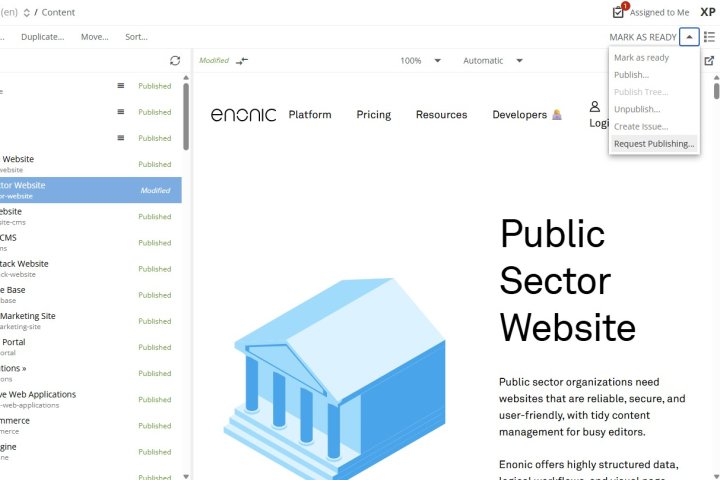Knowledge Base
Support customers and employees with a definite source of knowledge and documentation built on the Enonic platform.
Build custom content types, fetch content via a powerful API, and distribute to any channel—like a dedicated website, content in apps, or snippets on third-party sites.
Customers Running Knowledge Bases

Flexible Content Types
Knowledge can have a complex structure, and this is where Enonic's powerful content model comes into play.
You create custom content types through our schema system, where you can combine multiple input types and sets.
Schemas can even be reused across content types, and our powerful APIs enables content reuse across different channels where the knowledge is to be presented.

Tree Structure
Just as conceptual knowledge follows a certain hierarchy, Enonic offers a hierarchical tree structure, providing a neat overview of all your content items.
The content tree can reflect your website or a logical structure for managing your content. Here you can create, publish, sort, duplicate, and archive content items with custom access rights.

Workflow and Roles
Collaboration and approval processes are essential in an editorial environment, and especially where knowledge needs to be verified.
Enonic therefore features a content status workflow, issues system, and granular permissions and roles management.
Read Our Knowledge Base Case Studies! 💡

Reusable Structured Content Model for HDIR
Addressing both regulation and user expectations, the Norwegian Directorate of Health delivered complex information from several sources via multiple channels to different users—in one solution.

Helsebiblioteket Untangles Complexity with Powerful Enterprise Search
Faced with many complex sources, the Norwegian Electronic Health Library turned to Enonic for efficiently curating, cleansing, and distributing search data to healthcare professionals.
Knowledge Is Power ✏️

What is structured content?
Why you should focus on creating structured content and not building web pages in the age of headless and omnichannel.

Why editors should use structured content
Stop building pages, start building reusable, consistent, and flexible content instead!

How to model healthcare content structure in Enonic
Use Content Studio to establish content types, taxonomy, and create templates and components as preparatory means for building a truly robust healthcare content model.
